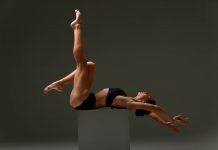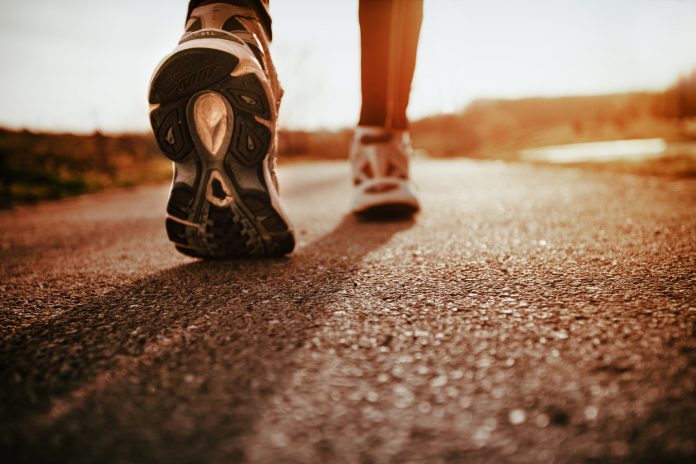Remember your first step? What a fuss everyone made! And then you continued to walk right on through childhood, adolescence, and into adulthood, but somewhere along the way, like most adults, you probably stopped walking so much.
In fact, most adults spend most of their day sitting — as many as 6.5 hours. Part of the reason may be your hectic, stressful life, with not a moment to spare for recreation or formal exercise. The environment plays a part too; inactivity has been engineered into our lives, from escalators to remote controls to riding lawnmowers to robotic vacuum cleaners to electric toothbrushes to the disappearance of sidewalks and safe places to walk. But research shows all this automation is bad for our health. Inactivity is the second leading preventable cause of death in the United States, second only to tobacco use.
You’d think a simple activity like walking would be just that, simple. However, fewer than 50% of American adults do enough exercise to gain any health or fitness benefits from physical activity. Is walking our salvation? Evidence suggests it’s probably a good start
What are the top reasons to walk?
Walking prevents type 2 diabetes. The Diabetes Prevention Program showed walking 150 minutes per week and losing just 7% of your body weight (12-15 pounds) can reduce your risk of diabetes by 58%.
Walking strengthens your heart.
In one study, mortality rates among retired men who walked less than one mile per day were nearly twice that among those who walked more than two miles per day.
Women in the Nurse’s Health Study (72,488 female nurses) who walked three hours or more per week reduced their risk of a heart attack or other coronary event by 35% compared with women who did not walk.
Walking is good for your brain. In a study on walking and cognitive function, researchers found that women who walked the equivalent of an easy pace at least 1.5 hours per week had significantly better cognitive function and less cognitive decline than women who walked less than 40 minutes per week.
Walking is good for your bones. Research shows postmenopausal women who walk approximately one mile each day have higher whole-body bone density than women who walk shorter distances, and walking is also effective in slowing the rate of bone loss from the legs.
Walking helps alleviate symptoms of depression. Walking for 30 minutes, three to five times per week for 12 weeks reduced symptoms of depression as measured with a standard depression questionnaire by 47%.
Walking reduces the risk of breast and colon cancer. Women who performed the equivalent of one hour and 15 minutes to two and a half hours per week of brisk walking had an 18% decreased risk of breast cancer compared with inactive women. Many studies have shown that exercise can prevent colon cancer, and even if a person develops colon cancer, the benefits of exercise appear to continue both by increasing quality of life and reducing mortality.Walking improves fitness. Walking just three times a week for 30 minutes can significantly increase cardiorespiratory fitness.
Walking in short bouts improves fitness, too! A study of sedentary women showed short bouts of brisk walking (three 10-minute walks per day) resulted in similar improvements in fitness and were at least as effective in decreasing body fat as long bouts (one 30-minute walk per day).
Walking improves physical function. Research shows that walking improves fitness and physical function and prevents physical disability in older persons.
Thousands of studies have proven exercise is good for you, but exercise scientists are also looking at the other side: the negative aspects of being a couch potato.
Study after study shows sitting is not good for health or fitness. Researchers showed that people who reported sitting “almost all of the time” died sooner from cardiovascular disease than people who reported sitting “almost none of the time,” ¼, ½, or ¾ of the time, and they did so in what was called a “dose-response” manner. This means the more you sit the more likely you are to die prematurely.
One study even showed that for “every single hour of television watched after the age of 25 the viewer’s life expectancy was reduced by 21.8 minutes!”
Finally, if you’ve got a desk job, walking just five minutes per hour during every workday would help you burn approximately 33,000 additional calories per year. Provided you didn’t change your diet, the change in your walking habit could equate to a loss of body weight of 9.4 pounds at the end of the year! Considering most people gain weight as they get older, you could get a big bang for your buck with not so much effort.
What types of walking are there?
There are two types of formal walking: power-walking (also known as speed-walking) and racewalking. Both types require technique; the difference between them is that racewalking is an Olympic sport with rules, for example, that the athlete’s back toe cannot leave the ground until the heel of the front foot has touched. Power-walking is done more recreationally. Both are excellent forms of exercise that yield fitness and health benefits.
Another type of walking requires no technique; just get out there and walk, one step in front of the other! You’ve been doing it your entire life, and whether it’s for exercise, a stroll, or walking the dog, there are lots of benefits to be gained from it. Continue if that’s what you do for exercise, but if you want to up the ante and start walking faster, attention to your technique might be key.
Where can I find tips on walking techniques?
The technique for brisk walking, whether it’s power or racewalking, is the same. Below are some tips on technique.
Legwork
A common mistake for beginners when trying to walk fast is lengthening the stride (overstriding). Overstriding is biomechanically inefficient and can slow you down. It will burn more calories because it’s inefficient (which might be a good thing), but you may burn fewer calories overall because you don’t walk as far due to fatigue.
Instead of overstriding to walk faster, concentrate on a powerful push-off while the front foot lands closer to the body. This is what elite walkers do.
Footwork
Walk heel to toe and not flatfooted to increase speed.
Contact the ground with your heel.
Roll the foot forward over the center of your foot.
Push off with your toes.
Hips
Rotate your hips forward and backward as you walk.
Your waist should twist. Racewalkers can look funny because of the hip rotation but restricted hip movement decreases your speed.
Torso
Keep your torso upright. Leaning forward or back will slow you down.
Arm work
Keep your elbows at 90 degrees.
Keep your hands relaxed.
Swing your arms forward and back and keep them close to your body. Your hands should not cross the midline of your body to maintain efficiency.
Speed up your arm swing to increase your speed and your legs will follow! This really works!



























